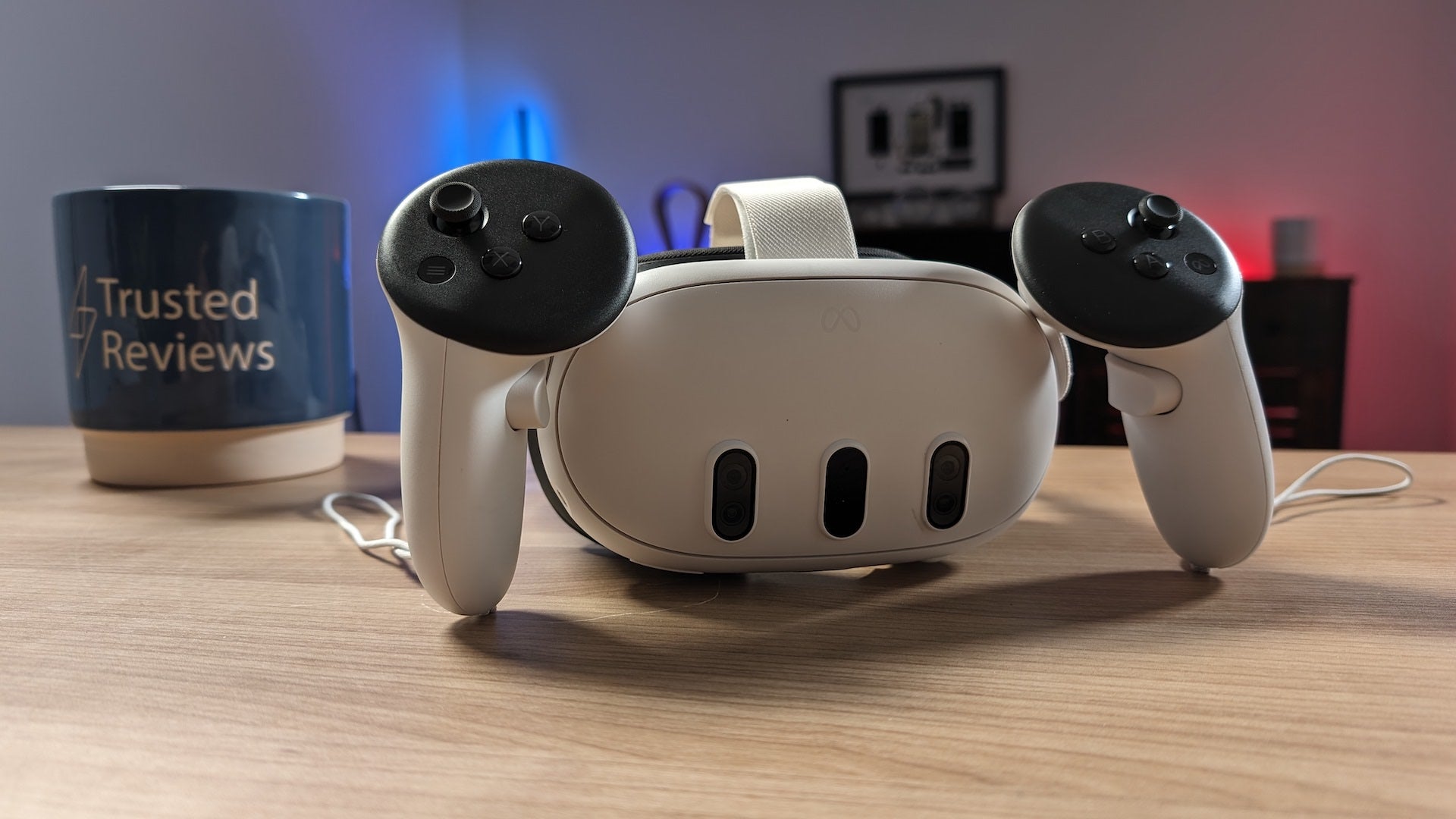Bluetti AC70 Review
A good light to medium-duty power station with some limitations

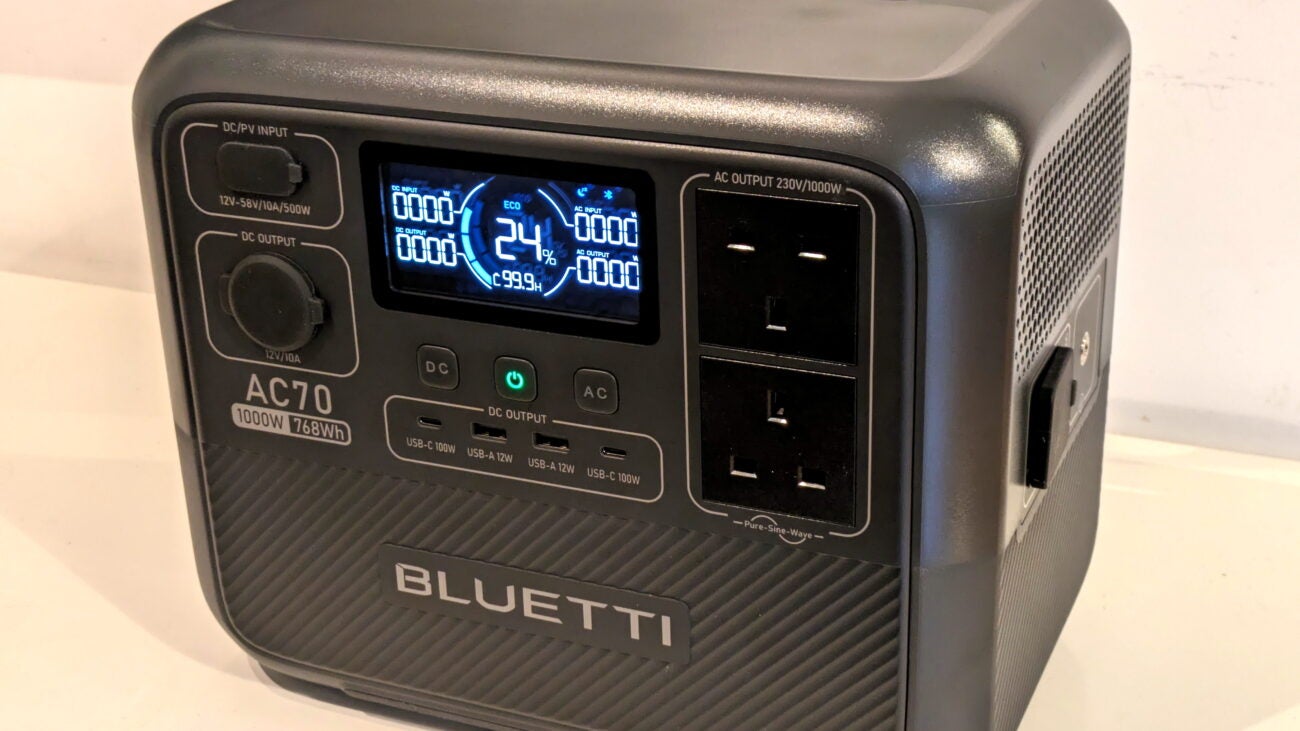
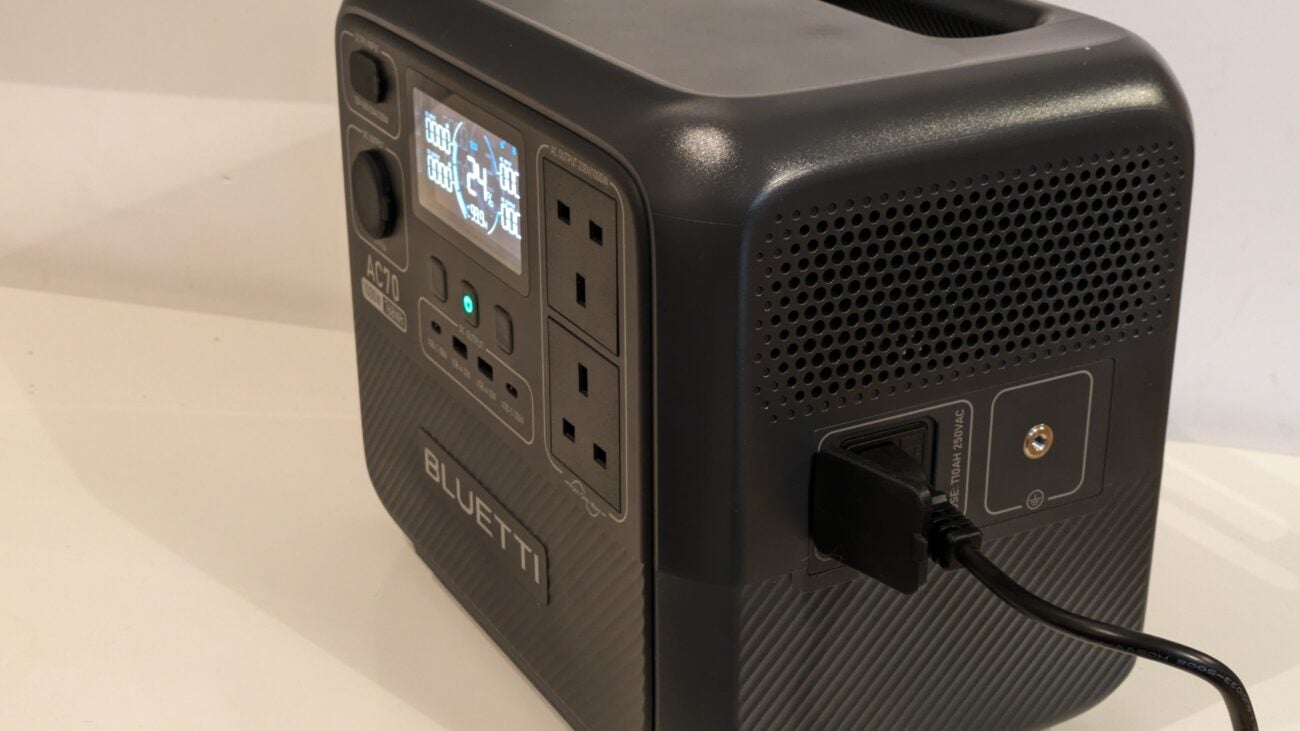


Verdict
The Bluetti AC70 is a reasonably luggable power supply with more than enough oomph to cope with camping and other portable use. It’s a little less convincing as a backup device for the home, where its limited output power and modest battery storage conspire to make it too weak for more demanding applications. Still, it’s stable, quiet, and quick to switch from mains to battery power, all of which make it a good choice for backing up a home office or medical device such as a CPAP machine. It’s not bad value, either.
Pros
- Very quiet for its size
- Clever ‘Power Lifting’ mode
- Useful app control
Cons
- Layout could be improved
- Noise under very low AC load
Key Features
- A light to medium-duty power stationThe AC70 can store 768 watt-hours of electricity, and satisfy peak demands of 1kW. That’s enough to run most household goods, but not the most heavy duty ones.
- A reasonable range of portsThis power supply has four USB ports, a car charging port, and can accept mains or solar inputs. It only has two mains outputs, though.
Introduction
The Bluetti AC70 is a light to medium-duty battery power station for the home, or for lugging around on a camping trip. It’s not especially compact, but at 10.2 kilos it’s possible for an able person to carry it some distance – there’s a huge moulded handle to help with that.
This power station offers most of the features you’re likely to need away from home. There are AC ports for mains-powered gear, plus four USB ports to cover a range of computers, tablets, phones and other devices. You can recharge from mains power when it’s available, or top up in the car when it’s not. There’s also an adaptor for connecting portable solar panels.
At 768 watt hours (Wh), the AC70 stores roughly enough electricity to power a fridge freezer for 8-16 hours, or a low-energy lamp for four days. It can deliver up to one kilowatt (kW) of mains power, which is enough for the peak demands of games consoles, powerful computers, televisions, and even some kitchen appliances.
Design and features
- Quite portable
- Not the best packaged power supply we’ve tested
- Useful app control via Bluetooth
This power station is a very similar size to the Anker SOLIX C1000, but it’s lighter thanks to the fact it’s packed with fewer batteries. Still, it’s about as big and heavy a device as you’d want to lug around over any distance. While I’d have no problem getting it across a muddy campsite, I wouldn’t want to trek up a mountain with it like the poor models in Bluetti’s promotional shots.
With a peak mains output power of 1kW, this power supply isn’t suitable for demanding appliances like washing machines, and some microwaves and coffee makers will be beyond its capabilities, too. The same could be true for kettles, but for an ingenious ‘Power Lifting’ mode, which lets the AC70 run certain devices that would otherwise be well beyond its limits.
This mode, compatible only with straightforward heating devices that aren’t too fussy about their electricity connection, limits the output voltage so that the connected device doesn’t draw more than the supply’s maximum. It’s limited to devices rated at 2,000W or below, which still rules out most kettles.
The AC70 isn’t the best packaged power supply I’ve tested. It’s well served for USB ports, with two 12W USB-A slots, and two 100W USB-C connections, but some users might need more than two mains sockets on a device in this class. More significantly, its UK plug sockets are stacked on top of each other, with the top one inverted.
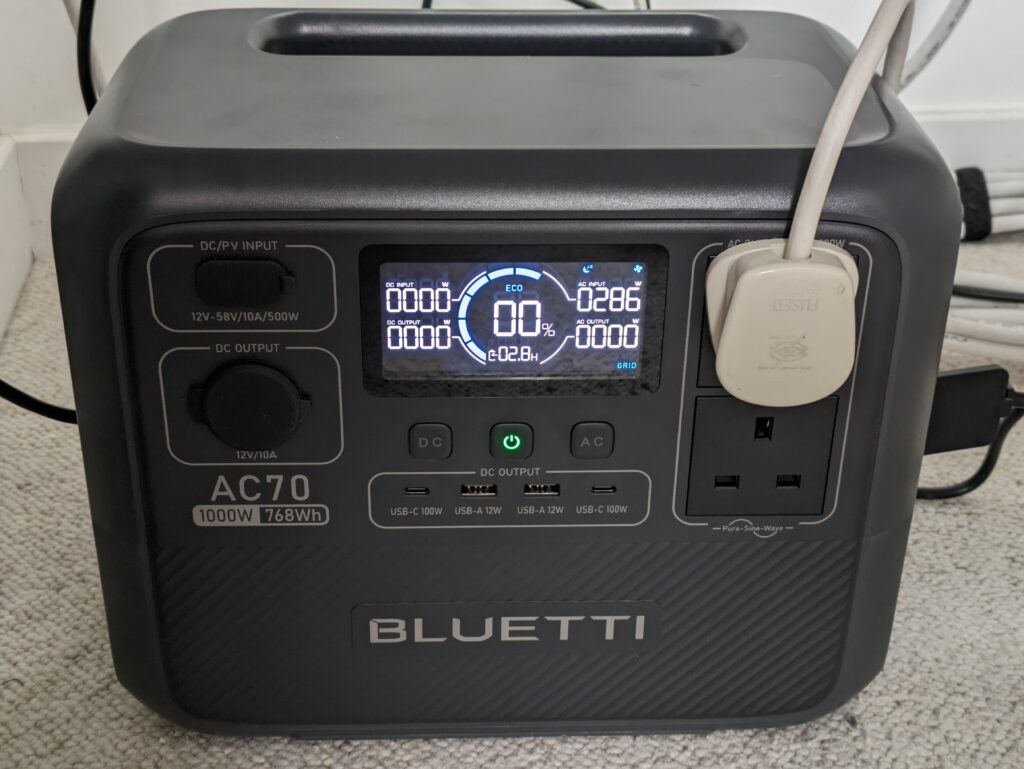
That’s fine – helpful even – if you’re connecting a device placed behind it, but if you’re plugging in an oversized adaptor such as some NiMH battery chargers, it could obscure the second port. It’s also odd that there’s no light built in, given this device is primarily focused on camping and other recreational use.
Grumbles aside, there’s lots to admire about this power supply. It feels rugged and chunky. Every port is clearly labelled with its maximum rating, which is a helpful way to prevent users inadvertently overloading it. Sensibly, the DC input and every output port are on the front panel, with only the mains input and grounding connection on the right side.
The AC70 also has a useful display, showing the battery’s state of charge in the middle, with a circular charge indicator to show whether the power supply is charging, discharging, or neither. Arranged around it are four large numerical displays to show the incoming and outgoing DC and AC power.
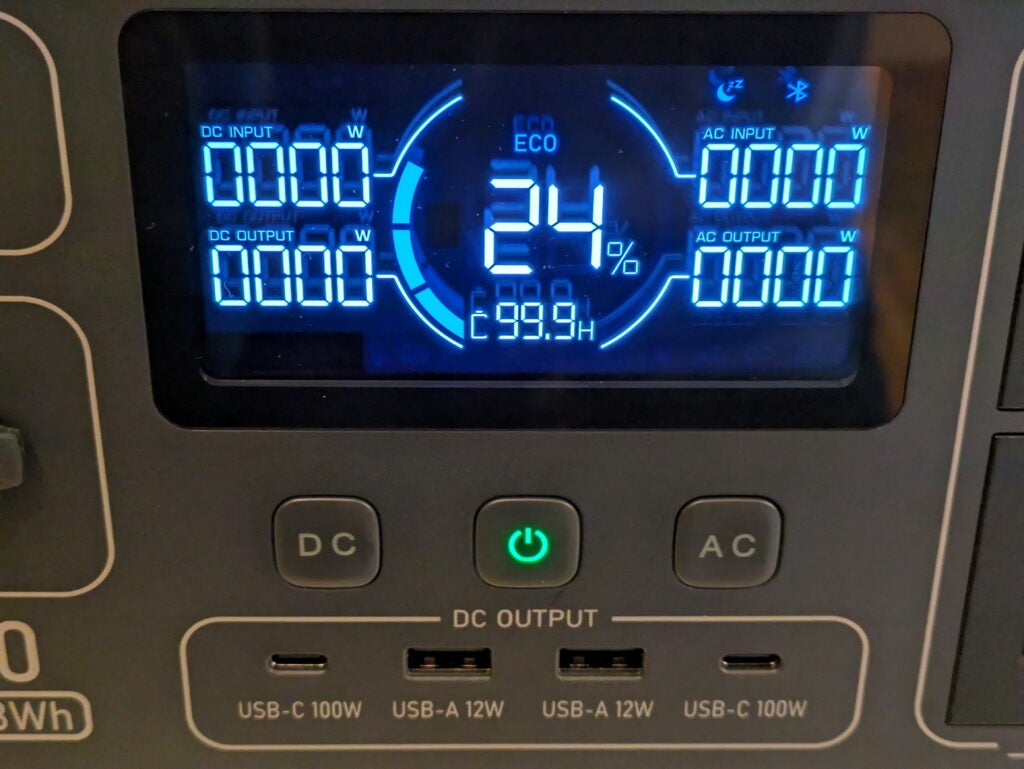
Various indicators show which features are active, while there’s a countdown timer to show you how long before the battery is charged or depleted, based on your current usage – every power station should have this. There’s lots of information on this display and it can look too busy – it’s a shame the DC and AC power figures default to 0000 when they’re inactive, rather than simply disappearing.
You can also connect to the AC70 via Bluetti’s app. I couldn’t find instructions for how to do this, so it’s as well that it’s trivially easy: tap + in the app, then scan the QR code stuck on the AC70 and its user manual. Once connected over Bluetooth, the app duplicates much of the information visible on the device’s screen, but you can also dig into the settings to configure the charging and Power Lifting modes.
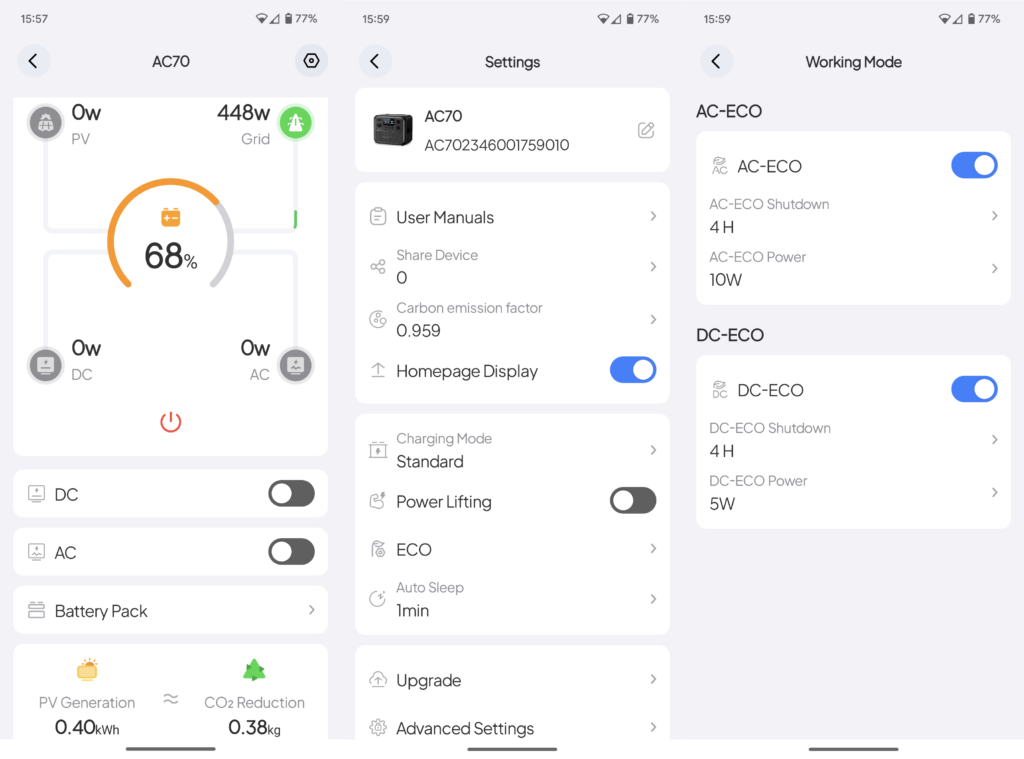
Helpfully, you can also tweak this power station’s Eco mode, which switches off the DC or AC outputs if they’re not being used. That’s a good way to eke out a battery charge if, say, a connected TV goes into standby mode, but on other power stations it can mean that the plug gets pulled on low-power devices. Crucially, this can include medical equipment like a CPAP machine. You can disable the DC and AC Eco modes independently, or configure the shutdown time and power threshold for each.
Charging
- Charge from mains, car, or the sun
- Maximum 1000W total charging
- Not the fastest-charging power station
The Bluetti AC70 offers a range of charging options. Connected to the mains, it’ll consume about 450W in its standard charging mode, giving a claimed recharging time of two hours. There’s also a turbo mode, capable of an 80% charge in 45 minutes, and a full charge in 90 minutes, along with Silent mode, which is specified to take four hours.
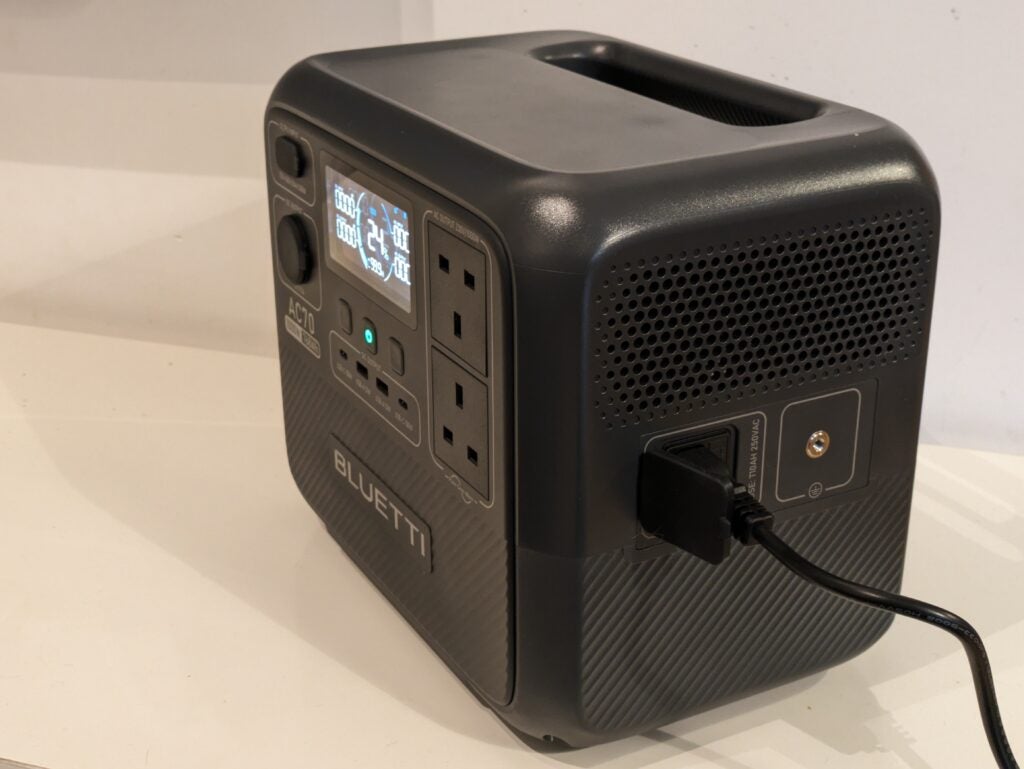
In my testing, the AC70 needed two hours and 13 minutes to fully recharge in Standard mode, consuming 892Wh. Assuming that this took its 768Wh battery from fully exhausted to fully charged, that equates to a good efficiency of 86%. Turbo charging completed in 86 minutes, consuming 901Wh, while silent recharging consumed 925Wh over three and a half hours. Curiously, the fans ran throughout, although they were very quiet.
You can also charge the AC70 via its DC input, using the supplied in-car and solar panel adaptors. Car charging tops out at 120W, so you’d only get a full battery after six and a half hours of driving. The AC70 will accept up to 500 watts of DC input so, in ideal weather conditions and with 500W of solar panels, you’d recharge in just over 90 minutes. More realistically, a solar input helps you extend the run time of a battery power station, keeping you off-grid for longer.
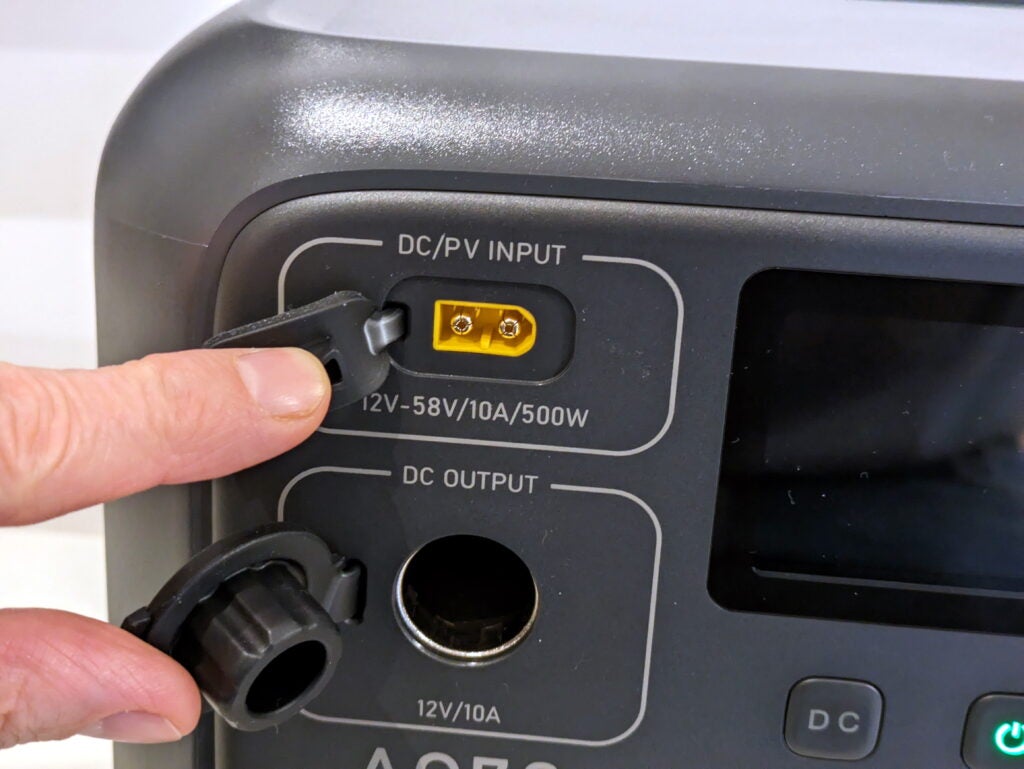
The AC70 supports charging from both DC and AC sources at the same time, but it’s limited to a 1,000W maximum across the two. It also has pass-through power, letting you use it while it’s charging. With the maximum 1,000W output connected and AC charging set to Turbo mode, the AC70 drew a maximum of 1,300W from the mains. That means that, as with most power stations, the AC70 will charge more slowly if it’s also powering a heavy load.
Performance
- Stable power output with quiet fans
- Reasonable efficiency
- Useful Power Lifting mode
I always test battery power stations at their maximum specified power output, which in this case is 1,000W (1kW). I connected the fully charged Bluetti AC70 to another power station configured to charge at that rate, and allowed it to fully discharge its battery. This took 40 minutes, over which time it provided 643Wh of electricity. Again assuming that the 768Wh battery went from full to completely empty, that would mean an efficiency of 83.7%.
As I’ve come to expect from battery power stations, this test seemed well within its capabilities. While the fans kicked up to a fast speed, they remained surprisingly quiet and very easy to live with. Even by the end of the test, the AC70 had warmed only slightly at its right-hand side, and it seemed completely unruffled.
No surprise, then, that it also had no wobbles when asked to provide a constant 500W, or a constant 200W. In the latter test it discharged a total of 663kWh (86.3%), while with a 500W load it delivered 697Wh (90.7%). Slightly surprisingly, that was the highest figure I measured for this device. Battery power stations usually deliver their maximum efficiency when supplying DC current, but I measured only 667Wh (86.8%) over a USB connection with a constant 60W load.
While the AC70 was generally very hushed and easy to live with, my sample did have a slightly odd quirk. On battery power, it made a variable, high-pitched noise when I turned on its AC ports. This normally lasted only for half a second or so, but it reappeared when the AC70 was connected to the mains and serving loads of below about 100W. I can’t say if this was a one-off, unique to my example, but if not it might make the AC70 tricky to live with if you’re using it to backup very light loads in a noise-sensitive environment like a bedroom or office.
All of the efficiency figures I’ve provided so far make assumptions about the battery capacity – it’s much more accurate to simply compare the energy you supply with the energy you can later take out. Taking the lowest charging and highest output figures, I measured a best round-trip efficiency of 78.1%. That’s about five percent lower than the most efficient supplies I’ve measured, but still quite reasonable.
I tested Power Lifting mode on my kettle, which is rated at 1.8kW. It boiled more slowly than usual, but completed without incident. My mains power meter reported it was using 976 watts, supplied at 182 volts – standard UK mains voltage is 230V.
Bluetti says the AC70 can switch to its battery within 20 milliseconds of losing mains power, which is in-line with most other portable power stations. That’s not as fast as a dedicated uninterruptible power supply (UPS), but it was quick enough to prevent my office PC or NAS crashing during a simulated power cut. One thing to note is that, in common with other domestic power supplies, there’s no warning buzzer to let you know when the AC70 is nearly out of power.
This is quite a keenly priced device, and it’s backed up with a five-year warranty. Bluetti says that its batteries will endure 3,000 charge cycles before dropping to 80% of their original capacity. Assuming linear degradation, the AC70 could store around 2730kWh in 3,000 cycles, which equates to 31p per kWh stored. That’s very competitive for a device with relatively modest storage. I should point out that the AC70 should continue working even after this point, just with a falling storage capacity.
Latest deals
Should you buy it?
A sturdy and quiet power station
The Bluetti AC70 has enough power for weekends away, or for light to medium backup duties in the home. It’s generally quiet, and seems very stable, too.
Layout could be better
The Bluetti AC70 isn’t the best packaged power station we’ve tested, and it’s a shame it doesn’t have a better mains port layout, or a built in light.
Final Thoughts
The Bluetti AC70 offers more than enough storage and output for trips into the wild, and its ability to take solar and car inputs could help you stay off-grid for longer than just a weekend. It’s a shame, then, that it’s missing a camping light, and that it couldn’t be a little more compact.
In the home, it’s a little short of puff to make the ideal power backup device – and its mains socket configuration could be a bit limiting. That said, its low noise and moderate capacity could make it perfect as a UPS to help office or medical equipment ride out a fairly significant power cut. However, if you need more ports or power, consider the Anker SOLIX C1000, or the Jackery Explorer 1000 Plus.
How we test
We test every battery station we review thoroughly over an extended period of time. We use standard tests to compare features properly. We’ll always tell you what we find. We never, ever, accept money to review a product.
Find out more about how we test in our ethics policy.
We test with a variety of devices to see how long the battery will last.
We test different charging methods to see how quickly the battery can be topped up.
FAQs
It largely depends on how often it’s used, and how much of the battery’s capacity you exploit. Bluetti guarantees the AC70 for five years, and says its battery will still be able to store 80% of its original capacity after 3,000 cycles – that’s equivalent to eight years of one full charge/discharge cycle a day.
Typically, yes. The AC70 certainly has more than enough poke to power even a large TV. Always check the maximum power consumption of your TV (and anything else you want to connect) against the maximum AC output of the power station you’re planning to buy.
Refrigerators vary, but most modern examples use only a couple of hundred watts. In theory, then, any power station capable of meeting your fridge’s power demands will run it. The AC70 will certainly power any domestic fridge freezer we’ve encountered.
Things get more complex when you consider how long you might want to run the fridge for. A modern fridge freezer uses one or two kilowatt hours per day, so you might only get about eight hours’ service from an AC70. If you live somewhere that sometimes has extended power cuts, you might need a device that stores significantly more energy.





